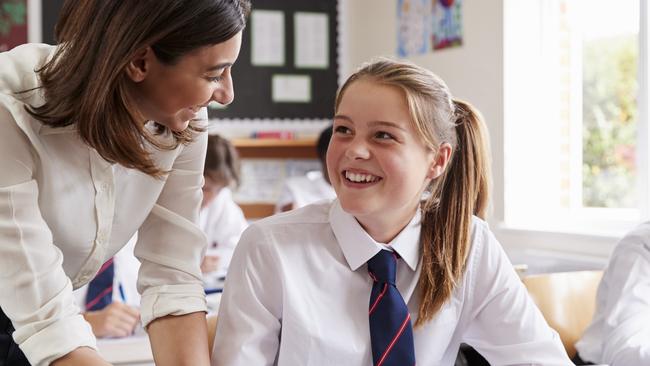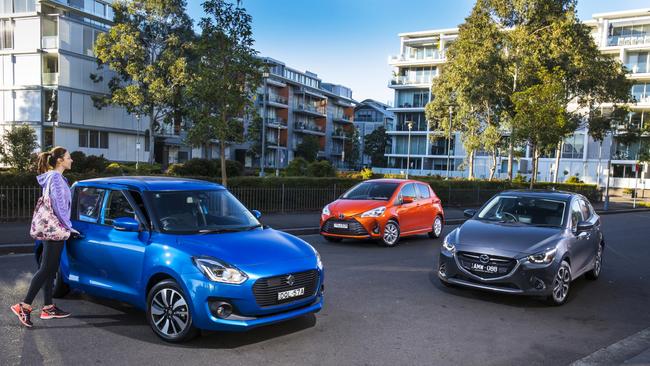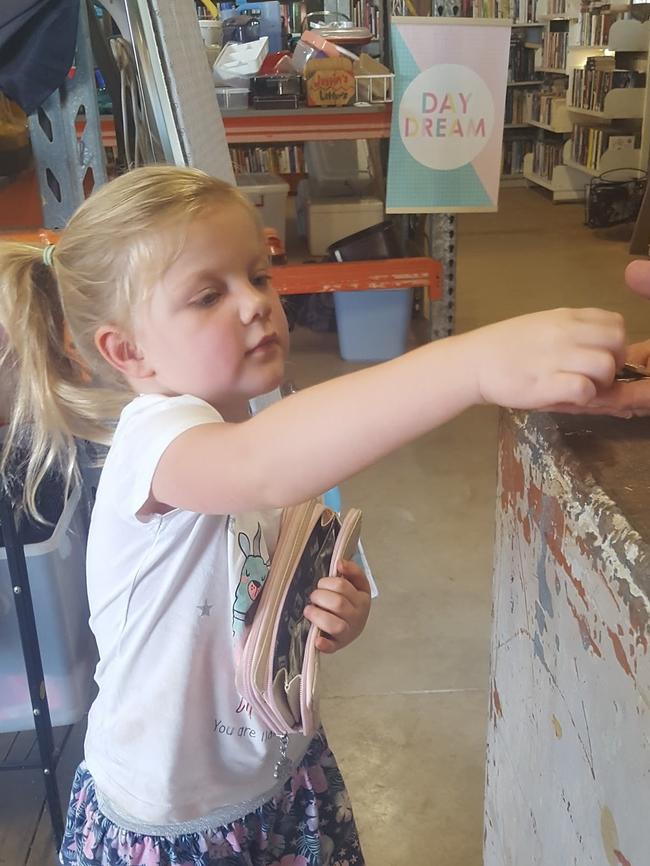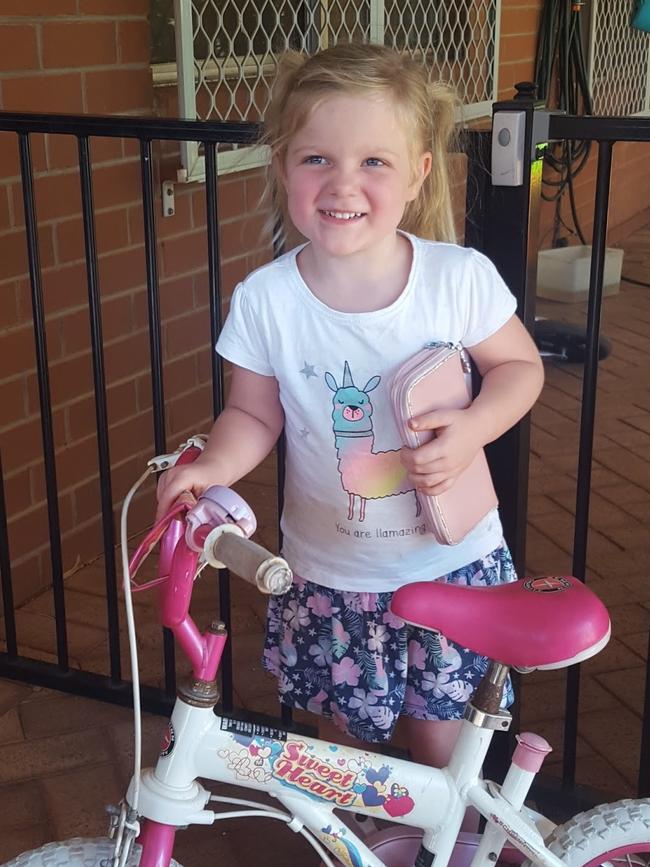Barefoot Investor: How to buy a car and save yourself money
Don’t fall for the trap of locking yourself into a bad car loan. Barefoot Investor Scott Pape has five simple steps to buying a car that could save you big bucks in the years that follow.

Barefoot Investor
Don't miss out on the headlines from Barefoot Investor. Followed categories will be added to My News.
Barefoot has long been a fan of the “buy the cheapest car your ego can afford” rule.
But as one reader laments a trap she fell into buying a car while at uni, there are five simple rules to make sure you’re not getting taken for a ride on your loan — and could even save you enough money for that overseas trip, house deposit or a much fancier ride.
WHAT TO KNOW WHEN BUYING A CAR
SARAH ASKS: I am a 25-year-old teacher and I got a car loan in my second year of uni. I had no idea what interest rates were, or how getting a loan worked, and just signed away on the first deal I got accepted for (which ended up being a fixed-rate loan with a 17 per cent interest rate). I have now finished uni and am teaching, earning $63,000 a year. I want to start saving towards my first house, but I have had the car for four years and still owe $8000! How do I go about fixing this mess?
BAREFOOT REPLIES: Honk your horn, because you just got totally rear-ended on that deal.
You signed up to a 17 per cent per annum interest rate, fixed for the term of the loan?
Hopefully the term of the loan is five years, which would mean you’ll be free in a year’s time. (Though it’s worth checking your contract to see if you can repay early without penalty.)
Unfortunately, I have no magic wand for you. However, you can be the fairy godmother to your students, by making sure they don’t fall for the same trap you did.
So, what I want you to do, Sarah, is to stand up in front of your class and tell your students just how “toot, toot, chugga, chugga-d” you got when you bought a car.
Actually, don’t do that, they’ll use it against you.
Here’s how old Barefoot would teach it.
(It involves harnessing their hormones — their desire to buy a car, travel, party and get rich!)
Here goes:
I’d channel my inner Oprah and start running between the desks and yelling at the kids:
“You get a car! You get a car! You get a car!”
(Sorry … got a bit carried away there. Let’s get serious.)
OK, students. Eyes front. Shoes off. Barefoot is here.
Step 1: Research a car you’d like to buy
Don’t censor yourself — it can be any car you want (new or second hand).
Write down two things:
The cost of the car, which will involve some online research, and why you chose this particular dream machine: Is it fast? Cute? Would it make you 10 per cent more attractive?
(The class can then vote on the cars the students have chosen.)

Step 2: Decide how you’re going to pay for it
Let’s say you earn $30,000 a year when you leave school, which gives you $2100 a month after tax.
You can get a car loan with super-easy low monthly repayments. Why wouldn’t you?
Or you can save up and buy something for cash (though not as flash).
Step 3: App it up
Download “Money Smart Cars”, a nifty car app from moneysmart.gov.au, which automatically calculates all the ongoing costs of owning a car.
Here’s an example:
Lucy buys an adorable 2016 Suzuki Swift for $13,000 and takes out a car loan at the car yard.
How much will this car cost Lucy over the next five years?
$20,000?
$30,000?
Go to the app and type in the details.
After factoring in rego and insurance, interest and running costs (including $50
a week in petrol), the total cost of owning the Suzuki after five years is … a Swift $53,765!
(That’s Oprah money right there.)
Step 4: Highway robbery
Now it’s time to reveal the true cost of owning a car: I call them the “3 Ds” — debt, depreciation and driving.
Go to redbook.com.au and find out how much you can trade your car for in five years’ time.
An eight-year-old Suzuki Swift has a trade-in value of $4400 to $5900.
New car smell?
Nah. By this time it’s lame little trees hung from the rear-view mirror to mask your boyfriend’s BO!
So, even on a best-case scenario, Lucy has lost a staggering $47,865 over five years, or roughly $10,000 a year.
What’s more, this car has been parked 90 per cent of the time.
And yet it’s gobbling up $896 a month … almost HALF your take-home pay.
(Let that sink in with the students.)
Step 5: New York, Paris, London … Suzuki Swift?
Let’s say that, instead of doing what Lucy did, you spend the first year saving up and you buy a 2014 Suzuki Swift for $9000 cash. (Barefoot Rule #342: “buy the cheapest car your ego can afford”).
And then you invest $650 a month in the share market (the rest of your money goes on rego, insurance, petrol).
After four years of saving, how much are your investments worth?
$20,000?
$30,000?
Answer: $35,148.
What could you do with that money?
Well, it could be the start of a seriously healthy home deposit.
Or it could fund a round-the-world backpacking adventure.
And of course it could be a really nice brand-new car, because your Swift is now a little old and tired.
Yet, let’s say you decide to leave it there for 30 years, don’t invest another cent, and simply forget about the dough.
What could that $35,148 be worth in 30 years’ time?
$100,000?
$200,000?
Answer: $353,682!
Look around you.
The kids you see who are staring out the window and goofing off have just missed a million-dollar lesson.
Not you.
If you take the time to understand this lesson, you’ll financially overtake even the smartest kids in your class.
This class may have been simple, but it’s incredibly powerful.
And you, Sarah, just gave it to them.
Happy travels!
BAREFOOT MONEY MOVEMENT TAKING OFF
I looked at my bedside clock: 4.03am.
It was Monday night (actually, Tuesday morning), and I hadn’t slept a wink.
Earlier in the week I’d launched the Barefoot Money Movement — my free, independent, money school program.
I’d made my case that this country needed a financial revolution, and that it needed to start with our kids.
I pressed “send” on my column … and waited.
(I made a pact with myself that I wouldn’t check the results for 48 hours … a classic ego defence mechanism.)
Would anyone sign up to pilot my money-education-minus-the-bank-mascots school program?
A few hours later I rolled out of bed and nervously checked the stats on barefootmoneymovement.org.au.
It turns out people did sign up. By the thousands.

Teachers from every part of this country have joined the Money Movement to ensure that their students learn the life-changing lessons most of us didn’t. Fair dinkum!
There were teachers from Melbourne. From the Cocos Islands. From the United States. From Britain. From Uganda. From … Russia?
Anyway, I’m absolutely blown away by the response from teachers. So everything’s ready to go for my new program, right? Wrong.
There’s just one little problem … I’ve spent the past week talking to passionate, hardworking Aussie teachers. And the one thing I’ve heard over and over again is that it’s incredibly hard to teach kids this core life skill if you’ve never learnt it or lived it yourself.
Teachers have one of society’s most important jobs, yet they don’t get paid what they’re worth.
So, here’s my promise: Teacher Professional Development.
Next year, I’ll deliver some free online professional development for those teachers who join the Barefoot Money Movement.
And I’m taking this movement to the top. I caught up with federal Education Minister Dan Tehan during the week — who I have been pitching this idea to for a while — and told him that the seeds of our grassroots movement are starting to sprout.
And he’s on side, commenting that: “Scott Pape’s campaign to teach young Australians the importance of managing money is highly commendable”.
Finally, a big thank you to all the teachers and principals who’ve already signed up to the Barefoot Money Movement. And if you know of a teacher who could benefit from this, please do me a personal favour and pass this on to them.
Tread Your Own Path!
DO YOUR JOBS, THEN ON YOUR BIKE, SCARLETT
EMILIE WRITES: I am so proud of our three-year-old! Scarlett saved up her pocket money from doing her “jobs”.
We took her to our local tip shop and she chose a second-hand bike for $5. She’s a Barefoot Kid!


BAREFOOT REPLIES:
That’s awesome! As a fellow parent of a three-year-old, I can attest that there’s something amazing that happens when they work hard, save up and buy their own stuff.
I love hearing stories from families who’ve read the book.
Now it’s time to hit the schools as well.
If you have a burning money question, go to barefootinvestor.com and #askbarefoot
The Barefoot Investor for Families: The Only Kids’ Money Guide You’ll Ever Need (HarperCollins)RRP $29.99
The Barefoot Investor holds an Australian Financial Services Licence (302081). This is general advice only. It should not replace individual, independent, personal financial advice.


